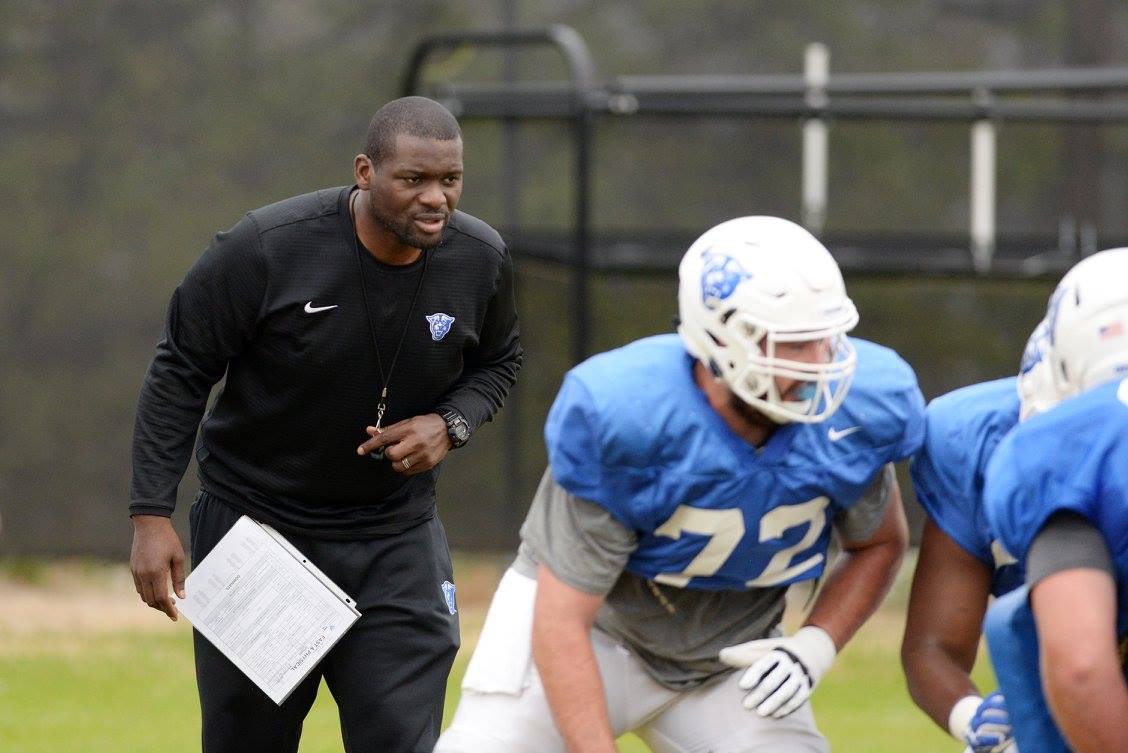
Today’s Division 1 football is often played at breakneck speeds. This pace can make it tough for fans to decipher what offensive plays are run and why those specific plays are being called. The Signal hit the brakes and sat down with Georgia State offensive coordinator Travis Trickett for a detailed breakdown of a play commonly run by the team.
The play is one of the most common in football but also one of the most vital to a successful offense: the smash concept. This play features five possible receivers, and Georgia State likes to run it out of a bunch formation when facing man coverage. This specific bunch formation packs two receivers close together on either side of the ball in an attempt to limit what the defense can do.
Trickett puts his players in bunch formations against man coverage for a few reasons: It cleans up the play for quarterbacks; it can allow receivers to get cleaner releases off the line of scrimmage, thus avoiding jams by the defensive backs; and it creates windows because of how limited defenses are in what they do with their coverages. These advantages are created against man coverage because the bunch formation causes natural rubs or picks, slowing down and confusing the defense. But the players still must have the skill to beat the defensive backs one-on-one.
“If your players can beat the man it’s good, but if they can’t it’s not [good] because then you’re going to get locked down,” said Trickett.
The smash concept has the outside two receivers on either bunch run hitch routes. A hitch route is when a receiver takes off upfield and appears to be running a streak but quickly turns around after four to five yards. The two inside receivers in the smash concept run corner routes. A corner route is when a receiver runs upfield — generally around ten yards — before breaking towards the sideline at a 45-degree angle. Then the offense has the running back as a check-down option if everyone else is covered.
Trickett has five possible receivers on this play, something that he does on purpose. It gives the quarterback options depending on which way the defense rotates on the play. It also keeps the potential receivers on their toes.
“The great thing about what we do is everyone is an option, and when you do [have] everyone as an option, those guys they’re running hard because they don’t know if they’re gonna get the ball or not, and that’s a big thing for us, ” said Trickett.
However, this play, like any other, doesn’t work without sound pass protection and a good drop back from the quarterback. When this concept was ran in the spring game in April, Trickett got just that from his offensive line and quarterback.
Facing a 3-4 look from the Panthers defense, the offensive line must be alert because pressure can come from many different places. The offensive line will “declare two outs” and then react depending on where the pressure on defense comes. The quarterback must have a clean drop back hitting the appropriate depth to have time to go through his reads.
This play is all about selfless football and doing your job. Each player has a role and must execute for it to work properly.
